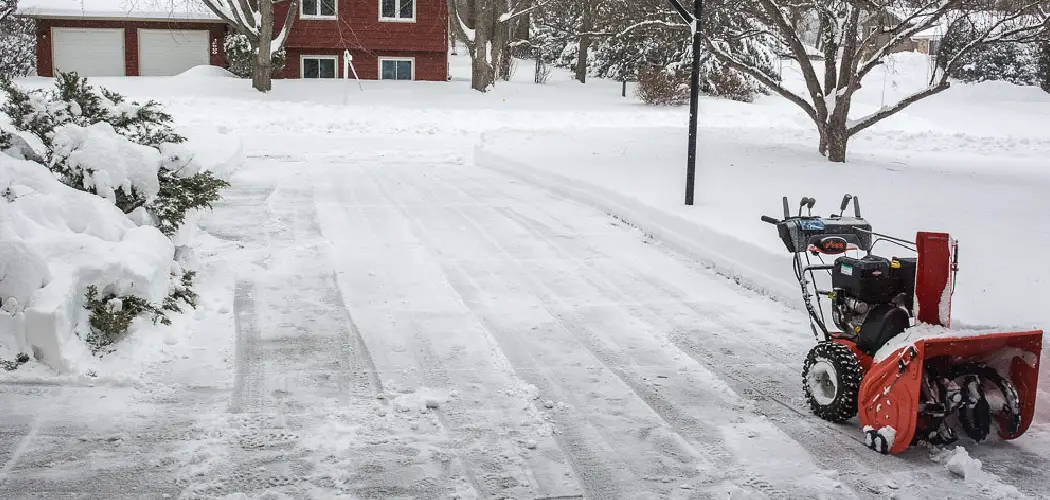Are you ready to tackle the cold winter season with a sense of confidence and have no fear when it comes to snow plowing your own driveway? Then look no further!
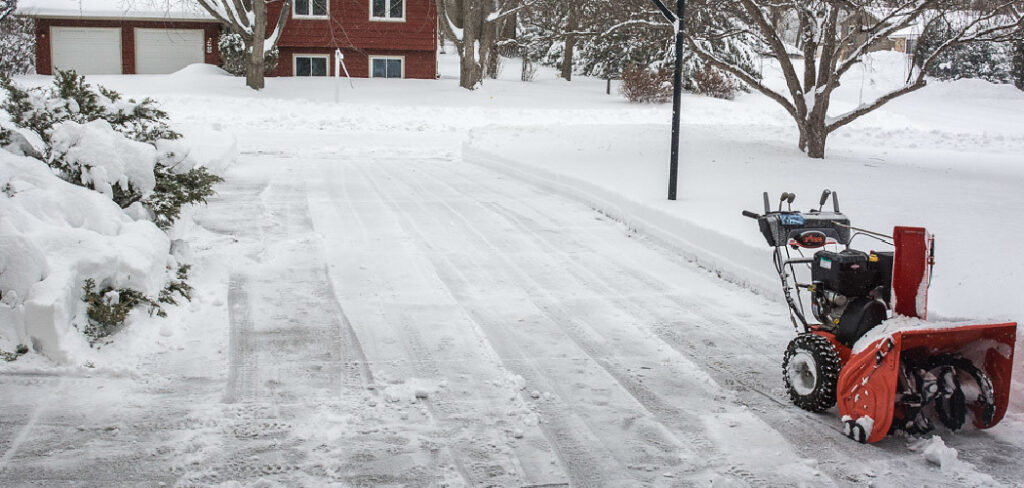
In this comprehensive guide, we’ll run you through the essential steps of how to snow plow a driveway like an experienced pro. We’ll equip you with all the necessary tools and techniques for safe, effective snow plowing so that you can maintain clear pathways on your property throughout the snowy months ahead.
Step-by-Step Guidelines on How to Snow Plow a Driveway
Step 1: Prepare Your Vehicle
Make sure you have a snow plow and the proper transport vehicle. To safely tow the snow plow, your vehicle should be fitted with a towing package, such as a trailer hitch or ball mount. If you don’t have one, get one installed by a professional or purchase one online. This is a necessary investment that will make the job much easier.
Step 2: Clear the Area
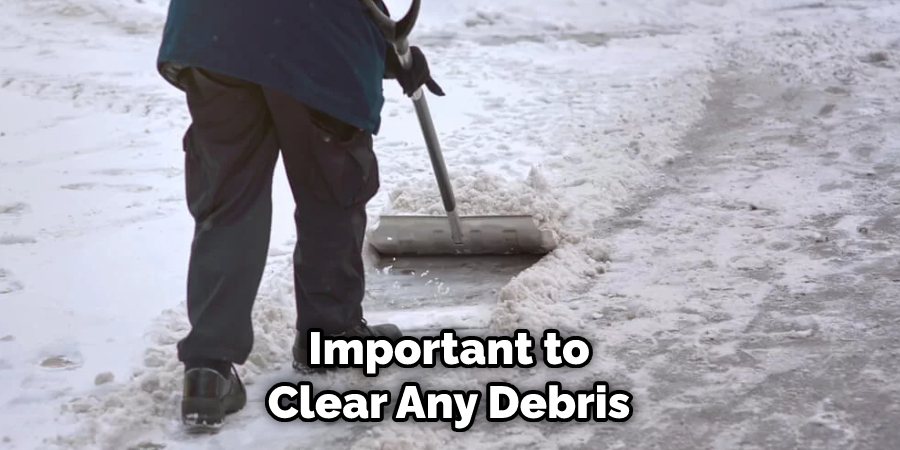
Before you start snow plowing, it’s important to clear any debris in your driveway or on the roads. This includes stones, sticks, and other objects that could damage your vehicle or get in the way of snow plow blades. When you’re done, check your tires, tire pressure, and other components like the brakes and lights.
Step 3: Secure Your Plow Attachment
Securely attach the snow plow to your vehicle with safety chains or straps. Ensure it’s firmly in place before you start driving around with it attached. Securing the plow will also help to prevent it from hitting other objects in your path.
Step 4: Set the Plow Blade
Raise or lower your plow blade to your desired height. This will help you adjust the angle of attack so that you can effectively clear away snow. When setting plow blade height, consider the type of snow and terrain and any bumps or dips in your driveway. Most of the time, a higher blade setting is the most effective for snow plowing.
Step 5: Start Plowing
Start slowly and methodically when snow is plowing, as too much speed could cause your plow to skip over large chunks of snow. Plow in straight lines, and keep an eye on any obstacles that may be in your way.
When you will plow the same area multiple times, be sure to vary your pattern each time. This will prevent you from digging a trench in the ground and make it easier for you to remove snow more efficiently.
Step 6: Remove the Plowed Snow
Once you’ve cleared the driveway or road of snow, remove it from your property with a shovel or snowblower. This will prevent it from refreezing and creating icy patches in your driveway. This is essential to ensure your driveway stays safe and clear throughout winter.
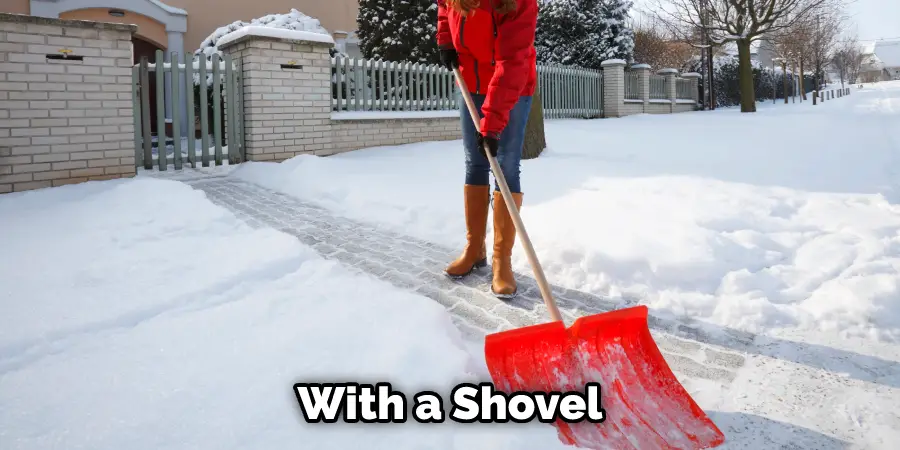
Following these simple steps to snow plow, a driveway can make the winter season much easier and more manageable. With practice, you’ll soon be an experienced pro at easily plowing the roads or your driveway! Good luck!
Additional Tips and Tricks to Snow Plow a Driveway
- Look out for obstacles like mailboxes, planters, rocks, and other yard decorations. Clear these from the area before plowing in order to avoid any damage.
- Check the driveway for cracks or potholes before beginning. If needed, fill them in with an asphalt patch or gravel prior to plowing to prevent further damage.
- Use the right blade for your plow. Many blades are interchangeable, so make sure you choose the one that is best suited to your particular needs and driveway conditions.
- Start plowing from the top of the driveway and work your way down in a zigzag pattern for maximum efficiency.
- To ensure a cleaner finish, use the back drag technique. This entails lifting the plow up and pushing the snow back toward you while driving in reverse.
- Pay attention to your edges. Make sure you are tucking your plow wings close to the edge of the driveway when pushing out excess snow so that it remains neatly tucked away.
- When the plowing is done, consider adding a layer of sand or salt to help prevent ice from forming on your driveway. This will make it easier for you when you have to plow again!
- Finally, be sure to store your snowplow properly between uses. Clean off any mud and debris, and apply a light coat of oil to the blade to prevent rust. Consider covering your plow with a tarp or plastic sheet when not used for further protection.
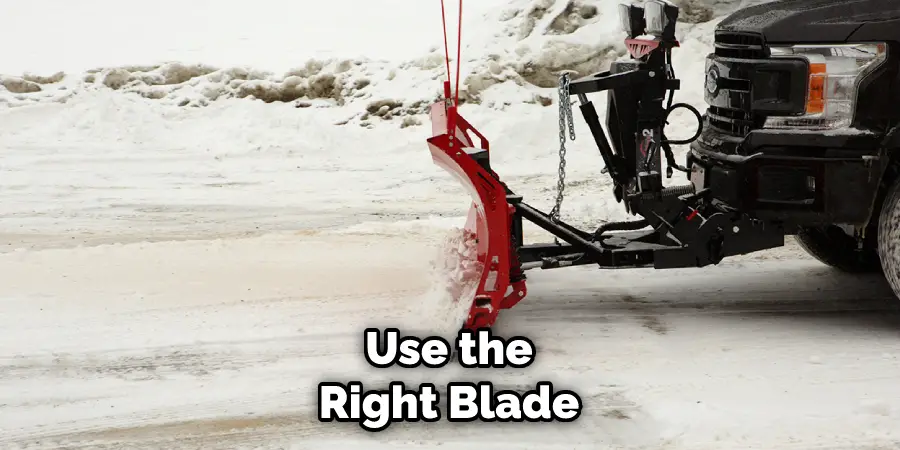
Follow these tips and tricks, and you’ll be ready to tackle any snowy driveway this winter! Good luck!
Things Need to Consider While Snow Plowing a Driveway
- Make sure to clear the area of any obstructions that might be in the way, such as large rocks or branches. Additionally, check for low-hanging power lines and other obstacles before starting.
- Choose a vehicle that is suitable for plowing driveways; this could include an ATV with a plow attached or a larger truck. Make sure that your vehicle is up for the job; if it’s not powerful enough, you could end up straining yourself and the vehicle.
- Set the plow angle correctly before beginning to plow. A shallow angle is important to ensure that any rocks or sticks will be pushed out of the way rather than dragged along or become stuck in the plow.
- When plowing, make sure to do it slowly and steadily; any jerking or sudden movements could cause damage to the driveway surface.
- Go over the area multiple times using different angles to ensure that all areas are cleared of snow and that the ground is leveled properly.
- Don’t forget to shovel or blow away any remaining snow from around steps, decks, or other areas with tight curves. Removing as much snow as possible is important to prevent ice buildup over time.
- After finishing plowing, spread salt or another de-icing agent over the entire area to ensure no ice will form. This will help prevent slips and falls later on in the winter.
Considering these considerations, you’ll be well on your way to successfully plowing your driveway! Have fun, and stay safe.
Frequently Asked Questions
What Are the Best Tools to Use for Snow Plowing?
Snow shovels and snow blowers are the two most common tools for snow removal. A dedicated snow plow is another option, but it is more expensive and requires a vehicle with a hitch.
For small driveways, a shovel or electric snowblower may be enough. A gasoline-powered snowblower or a snow plow attached to a vehicle may be necessary for larger driveways.
What Is the Best Way to Remove All of the Snow?
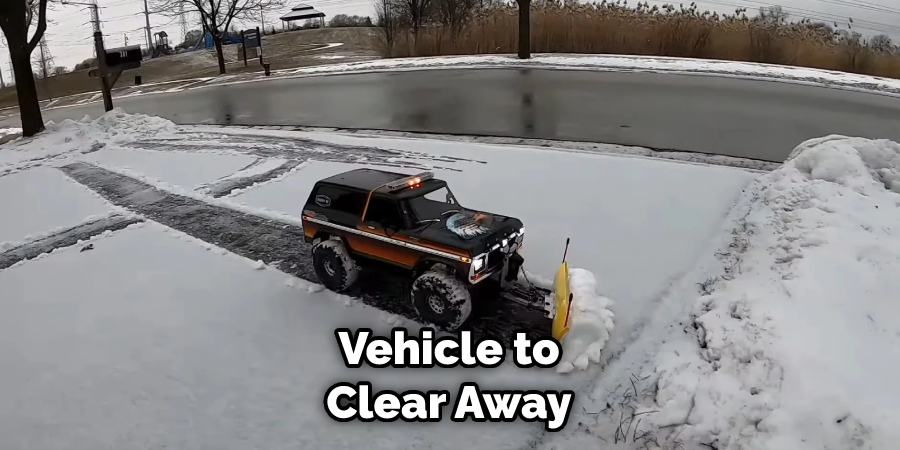
The best way to remove all of the snow is to first use a shovel or electric snowblower to clear away most of it. Then, use a gasoline-powered snowblower or a snow plow attached to a vehicle to clear away the rest of the snow and any leftover ice or slush.
What Should I Do With the Snow After It Is Removed?
After all of the snow has been removed, it should be placed in a pile far away from your driveway and any other areas where people may walk. This will prevent it from refreezing and making the driveway slippery and dangerous.
Alternatively, you can also move the snow onto a tarp and haul it away to another area. This is a great way to get rid of extra snow without making a mess.
What Safety Precautions Should I Take When Snow Plowing?
When clearing snow from your driveway, it is important to take safety precautions. Make sure to wear proper safety gear, such as a hard hat and protective eyewear.
Additionally, always be aware of your surroundings and try not to operate the equipment in areas where other people or objects may be in danger. Lastly, ensure that your snow plow is properly secured so it does not become detached during use.
What Can I Do To Make Snow Plowing Easier?
To make snow plowing easier, consider using a shovel or electric snowblower to clear away the snow before using a gasoline-powered snowblower or a snow plow attached to a vehicle.
You can also buy special attachments that help reduce the force needed when pushing the snow. Finally, you can use anti-icing chemicals to prevent the snow from freezing and make it easier to remove.
Conclusion
Knowing how to snow plow a driveway is an important skill to have in areas with cold winters. The right tools and safety precautions can make the job faster and safer, while special attachments and anti-icing chemicals can help make it easier.
With this knowledge, you can efficiently remove snow from your driveway and keep your home safe from slippery conditions. You can also help your neighbors by offering to snow plow their driveway and ensure everyone is safe this winter.

